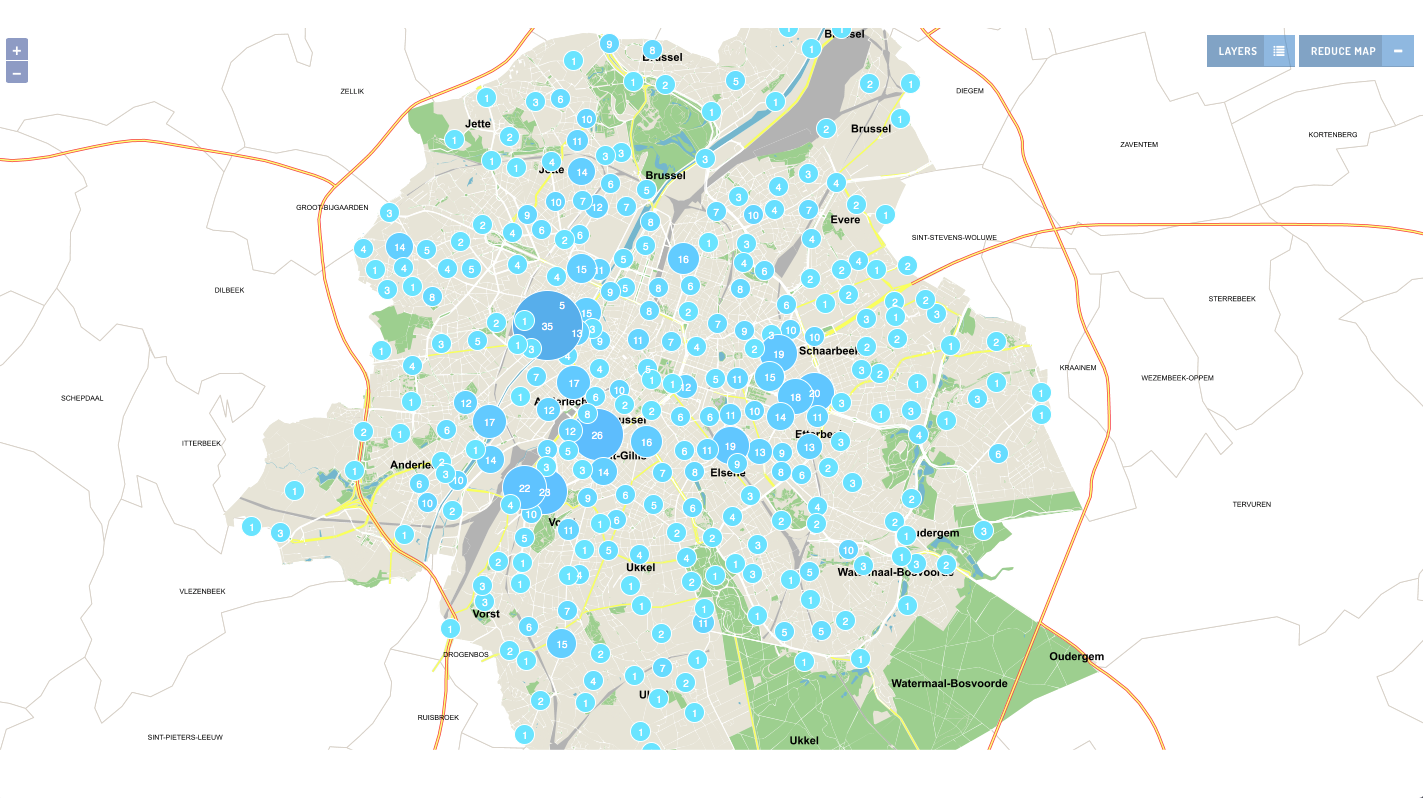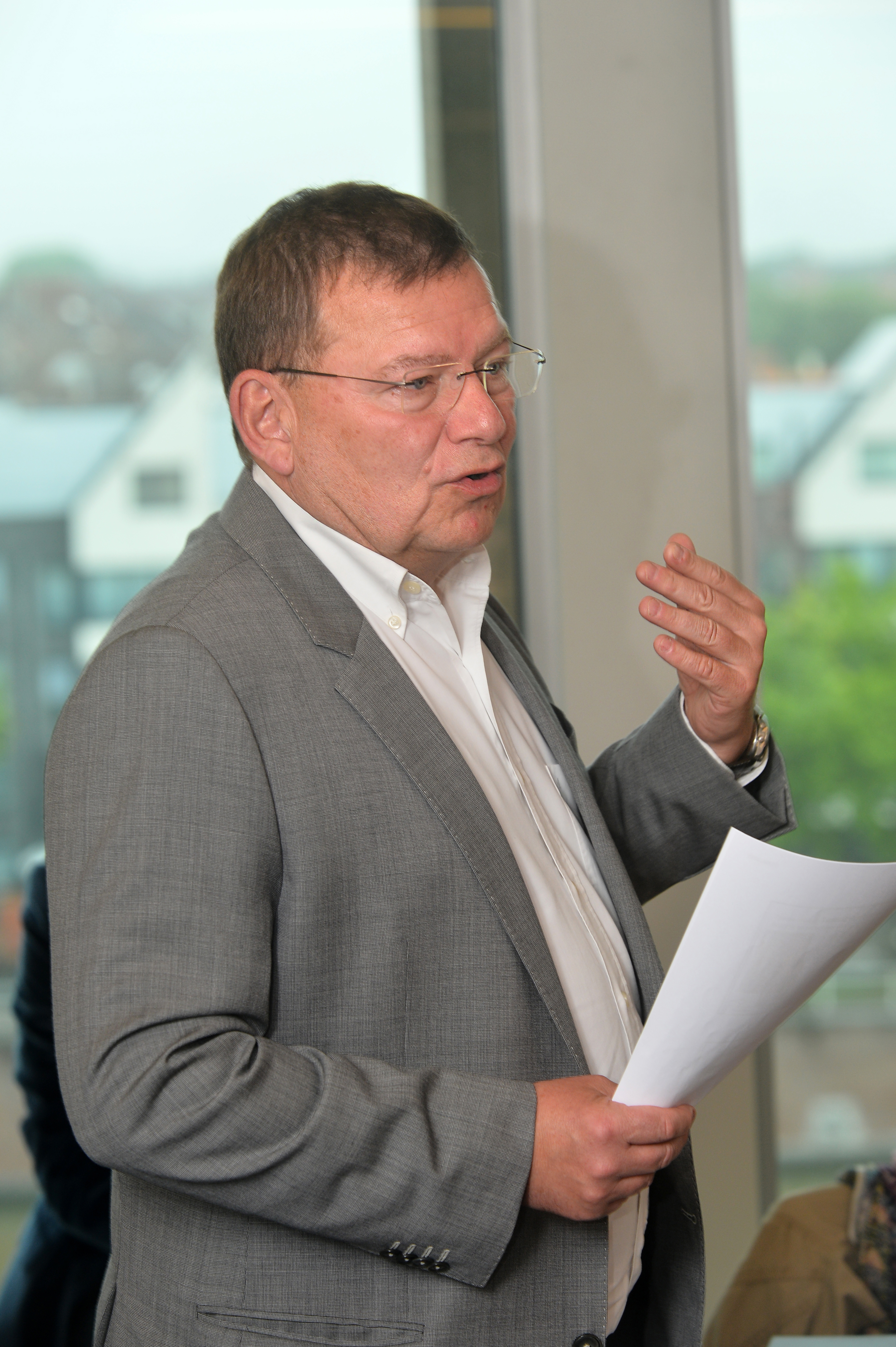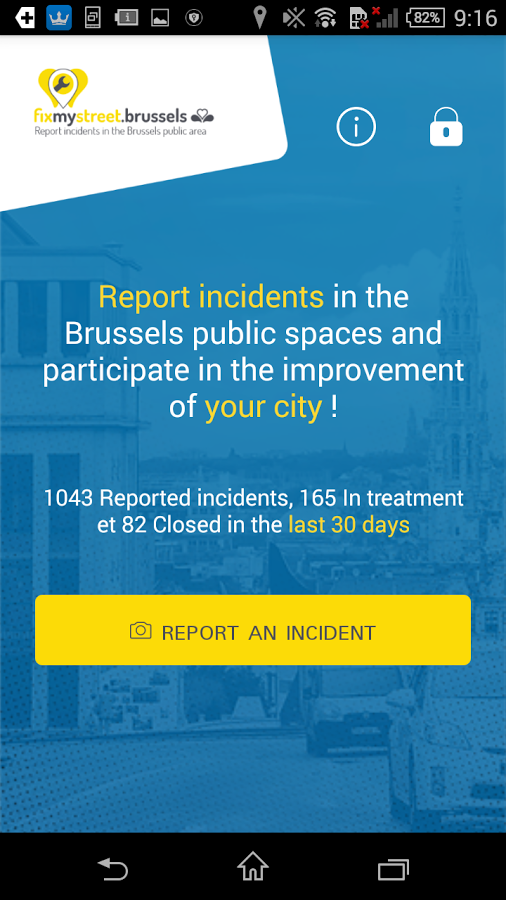
Photo: Map-of-incidents
How citizens are helping to fix Brussels’ streets
16 April 2018
by Jonathan Andrews
With cities looking to become more pedestrian friendly, the appearance of public space has never been so important. Nick Michell discovers how Brussels is using mobile technology to fix its city streets
Ever tripped on a loose pavement stone, driven over a huge pothole in the road or been bothered by a defective streetlight outside your house, and not known the relevant authority or person to contact to deal with the problem? Well, Brussels has come up with a solution.
Launched in April 2013 by Bruxelles Mobilité, the administration of the Brussels-Capital Region responsible for equipment, infrastructure and mobility issues, the Fix My Street Internet and mobile platform is a way for citizens to report problems in the public space electronically, such as potholes, broken pavements, defaced walls, faded road markings, fly tipping, and problems with public lighting and road signs, through a single point of contact.
“We discovered there was a demand for an application that could help fix various issues on the streets of Brussels,” says Julie Delhaye, Implementation Manager, Brussels Regional Informatics Centre, which developed and maintains the website and mobile application. “No app existed in Brussels at the time that fitted the bill so we decided to develop a collaboration platform using an open source code.”
Fix My Street was inspired by a similar project by mySociety, a not-for-profit social enterprise based in the UK, which aimed to provide a simple way to report faults to the authorities responsible for getting them fixed. The Brussels Regional Informatics Centre adapted the code to respond to the specific needs of the Brussels Region and partner communes.
Once the Fix My Street app has been downloaded, the user can take a picture of an incident, whether it is illegally dumped rubbish, broken streetlights or dangerous pavements, add a description, choose a category and upload. Each incident can be geo-tagged and a message will be sent in to the administrators, which will in turn be forwarded on to the relevant authority to deal with the issue.
“When there is data input throughout the system, it first arrives at Bruxelles Mobilité,” says Dimitri Strobbe, Advisor to Minister Pascal Smet, Brussels Minister for Mobility and Public Works. “There is a team of people that receive the incidents and then distribute it to the relevant stakeholder. If it’s related to trash it will go to Bruxelles-Propreté for instance. If it’s to do with infrastructure it might be communal or divisional, so, even though these incidents are guided automatically using the categories, sometimes a human check is required.”

One platform
Bringing everything together into one platform means that citizens no longer have to spend time searching for the relevant authority to contact, particularly considering Brussels’ complex governance structure, which consists of one regional government (Brussels-Capital Region) and 19 municipalities, each with individual responsibilities for the handling of local-level duties, such as law enforcement and the upkeep of schools and roads.
With some issues coming under the jurisdiction of two different municipalities and the significant number of stakeholders that are responsible for different areas–such as waste, street lighting or road surfaces–the process for citizens to inform authorities was cumbersome. Often, citizens just gave up. Given that municipal websites are often complex and slow, and some authorities will only take reports by phone, the real value of the app to both citizens and authorities becomes apparent.
“Until 2006, each municipality was responsible for street lighting,” says Philippe Massart, Director, Communication and Relations with Municipalities at Sibelga, the grid operator for electricity, natural gas, and street lighting, “so there were 19 different policies on street lighting.”

He adds that Sibelga took over responsibilities for street lighting when the regional parliament decided that it would no longer be a matter for local municipalities. “We had to work very hard to create a uniform and standardised system for maintaining and repairing streetlights throughout the city.”
The app can be used to monitor a reported incident and users receive email notifications of work that is being carried out. The website features an interactive map, where citizens can also view the progress of other reports and search completed projects.
Since its launch, over 8,000 people have used Fix My Street to report a problem, while professionals involved in communal urban development, public hygiene services, and road management, also access the application’s services. Last year, almost 26,000 incidents were registered.
“The stakeholders benefit by having more eyes on the street,” adds Strobbe. “Instead of sending out technical people to report issues, the city’s citizens can do this job instead. Some incidents may be reported two or three times, but this serves as a gentle reminder to the authorities to fix the problem. It is like a citizen-based crowd-sourced flow of information, way stronger than anything that existed before.”
The 19 Brussels communes are all involved in the platform, so it covers the whole territory of the Brussels Region. The initiative brings together a number of important stakeholders including: Sibelga, Proximus (telecommunications), Vivaqua (water utility), the STIB public transport company, Bruxelles-Propreté (waste), Brussels Mobility and others, who work together to implement the project and resolve the incidents reported.
“About 15 percent of the problems related to waste are reported via Fix My Street,” says Pierre Hotyat, CIO, Bruxelles-Propreté, a waste management organisation. “The app has positively affected our services by providing us with real-time reports that can be dealt with swiftly, which is positive for the image of Brussels. Is the city cleaner now? Objectively, it must be as these 15 percent of complaints have been added to those we were already dealing with. But it is difficult to say whether Brussels’ residents or visitors feel the improvement. Indeed, the perception of cleanliness is very subjective.”
Sense of ownership
As a smart city tool, Fix My Street also highlights the involvement of citizens in the management of their neighbourhood and commune, and the attention they give to the quality of the public space in which they live. The app provides residents with a sense of pride in their city, as they can observe the progress of the positive changes that they themselves have brought about.
But it’s not just the users that benefit. With data becoming increasingly important and sought-after, the reports sent in are providing the app’s stakeholders with free and useful information.

“Users provide vital information to the stakeholders but on the other hand the users themselves become ambassadors for their cities,” explains Damiaan de Jonge from the Brussels Ministry for Mobility and Public Works. “It is actually quite an easy process to report an incident as you walk to the metro station, and by following its status, you really get the feeling the you are actively improving the appearance of your city. The app shows that ‘everyone is Brussels and Brussels is everyone’, and not just the government or other authorities.”
The administrators of Fix My Street acknowledge that the success of the app heavily relies on residents being willing to spend the time to send in reports and will only continue to do so and gain a sense of ownership of their city if the experience they have with the app is a good one.
Improvements
The Fix My Street initiative has evolved since its launch in 2013, including the integration of further stakeholders such as Bruxelles-Propreté, which was added about a year ago, following significant demand from users for services related to waste management.
Bruxelles Mobilité, through back-end reports, analyse the time it takes between receiving a report, the execution, and the closing of the incident, and the resulting correspondence with the user. Improving usability is one of the top priorities, ensuring that citizens from all IT backgrounds are able to easily navigate the app, and the process is as simple as possible.
“We are working on the integration of Bruxelles Environnement, as well as others,” says de Jonge. “We have to look at the added value for these stakeholders to work with the app, but also for the user. We want to add to the services we offer but also keep the app processes very straightforward. It is key that our citizens feel responsible for their city and therefore do not have to be an IT expert to be able to use the app.”
Making sure the new services added are user-generated is a vital part of the working model. Through feedback and dialogue with users, more data has been integrated and a number of categories has been added. As part of the next phase, follow-up emails are planned to be made clearer and provide more information on why a particular issue might not have been fixed yet.
“We could definitely use our core users and integrate them more in the process to improve the app,” adds Strobbe. “We’re going to add some icons because people are sometimes not familiar with the terms or wording. We try to come up with ideas for new terms, to make it easier for the regular citizen—who might not know the difference between asphalt and concrete—to understand. It must be as easy as possible for the user but also ensure the expert has the most precise information, and finding that balance is important.”
The app creates a shared responsibility between all the stakeholders and a form of peer pressure, where none of those involved want to be seen as the ones not providing the service and fixing the street.
Although Fix My Street has managed to accumulate over 8,000 users since its launch, adding to these numbers can only help improve the appearance of public space in Brussels, and while Dimitri Strobbe believes in word of mouth as a way of increasing users, “it’s like putting the garbage outside to be collected: we do it because we know the service exists, and the longer it does the more people talk about it.”
Philippe Massart thinks more need to be done. “Fix My Street is a great initiative that is working well but what we need now is more citizens involved and aware of the service,” he says. “It is now totally aligned to all the stakeholders like Sibelga, but there is still a lack of notoriety. It needs more visibility, impact, and more of a push from the administrators to get it known.”

Open data
With almost 26,000 incidents reported last year, Fix My Street has a huge flow of data coming into its system and how to share this has not yet been finalised. Having received various inquiries from citizens, data analysts and even architects wanting to know which kind of incidents are most regularly reported, the Fix My Street team are looking into ways of making this information open to everyone.
“We are not yet a city that is very open to open data,” says Massart. “I think the only operator in Brussels that is far ahead is the public transport system, which has a very big open data policy. For the rest of the city we cannot really say that we are advanced in open data. For Sibelga, it’s not that we are against open data, the problem is, with the opening of the energy market, the business model of the energy market has changed so much since 2007 that we have had no time to concentrate on open data, but I think it will be a great challenge for us in the coming years.”
Sharing experiences
The Fix My Street app seems to be operating well in Brussels. The model of bringing everything together into one platform, particularly in a city like Brussels with such a complex governance structure, is clearly one that can benefit citizens, stakeholders and the city as a whole. Whether it can be successfully replicated in other cities remains to be seen.
“We kindly welcome other cities that want to learn from our experiences,” says Strobbe. “We could, for example, share parts of the code and explain how the back-office ticketing system is built up by different administrations and services. If other cities are working with similar citizen-based crowdsourced reporting tools, they are also welcome to provide us with their feedback.”







